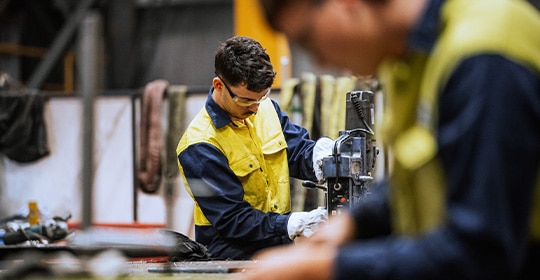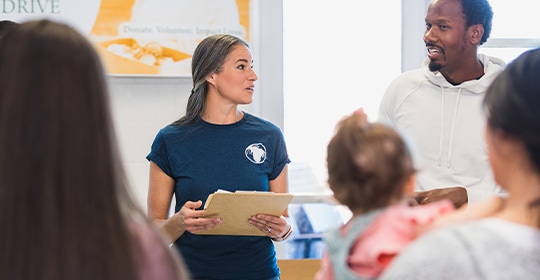Research Everything IT
RECENTLY ADDED
Read the Latest in the Research Hub


Dec 10, 2025
Services
State and Local IT Funding: What Agencies Need To Know
Article
3 min
CDW Government can help you find the right funding to achieve mission success.


Dec 05, 2025
Cloud
How a Non-Profit Gained Autonomy and Agility With an Azure Cloud Migration
Case Study
4 min
Discover how CDW helped a non-profit organization migrate from a restrictive VMware environment to Microsoft Azure, reducing deployment times from one month to two hours and optimizing costs.


Dec 05, 2025
Cloud
Health Insurance Leader Scales for Future Growth With Cloud Adoption Framework
Case Study
0 min
Discover how CDW helped a major health insurer navigate market changes by implementing a Microsoft Azure cloud environment, reducing onboarding times by 98% and creating new revenue streams.


Dec 05, 2025
Cloud
Seamless Azure Migration Transforms Technical College’s Cloud Strategy
Case Study
3 min
Discover how CDW enabled a top-ranked technical college to migrate 76 virtual and nine physical servers to Azure with minimal disruption, enhancing scalability, efficiency and disaster recovery for better operational outcomes.


Dec 05, 2025
Cloud
Manufacturer Boosts VDI Performance With Azure
Case Study
4 min
A leading manufacturing company partnered with CDW to migrate its on-premises Citrix infrastructure to Microsoft Azure, eliminating performance issues and gaining scalability. See how the move improved user experience and reduced IT incidents.


Nov 28, 2025
Cloud
Azure Things: Journey Through the IT Upside Down
Webinar
2 min
Join us for an exclusive webinar that explores the opportunities and challenges of adopting Azure. Learn why Azure is surging in popularity, tackle common concerns and discover how CDW solutions can ensure your IT plan is ready for what’s next.
TRENDING
What Other IT Pros are Researching
View All

Sep 16, 2022
Networking
Why You Should Consider an Upgrade to Wi-Fi 6 or 6e
article
3 min
A wireless upgrade can help organizations meet users’ growing demand for connectivity.


Oct 03, 2022
Security
Don't Get Hooked: Avoid Becoming the Bait of a Phishing Email
article
3 min
Take a look at this infographic to learn what to look out for in a suspicious email.


Sep 23, 2022
Digital Workspace
Conversation Design Puts AI One Step Closer to Humans
article
4 min
Conversation interfaces can enable customer interaction with automated systems more naturally.


Sep 09, 2022
Cloud
When a DDoS attack comes, defend your applications with an AWS firewall
article
3 min
CDW Managed Services for AWS protects customer web applications using AWS WAF Security Automations.
SECURITY
Create a Secure Digital Environment
Helping to protect you—and your end users—from security breaches.


Nov 19, 2025
Security
Measuring the True Success of Your Vulnerability Management Program
Article
6 min
Are your vulnerability management efforts truly reducing risk or simply checking boxes? Learn to measure the success of your vulnerability management program with a tiered approach to metrics for operational, tactical and strategic insights.


Oct 30, 2025
Security
Secure the Unseen: Cracking the Code on Machine Identity Management
Article
5 min
Machine identities drive digital transformation but can pose security risks if left unmanaged. Effective management begins with a strong governance strategy, extending traditional IAM principles to address the unique challenges of machine identities.


Oct 29, 2025
Security
5 Affordable Ways to Boost Cybersecurity Maturity in Higher Ed
Article
5 min
Discover affordable strategies to strengthen your cybersecurity maturity. Learn how a trusted IT partner can help institutions secure data and modernize operations without overspending.


Sep 30, 2025
Security
Acronis Cyber Protect: A Unified Solution for Cybersecurity and Data Protection
Article
2 min
Discover how Acronis Cyber Protect empowers small- and medium-sized businesses with integrated cybersecurity, data protection and endpoint management. Learn about its benefits, industries served and technical requirements.
Collaboration
A Digital Workspace for New Ways of Working
View All

Nov 28, 2025
Digital Workspace
Creating Seamless Personalized Journeys Across Every Channel
Webinar
1 min
Discover how to create a customer journey that makes every touchpoint feel effortless and human.


Nov 05, 2025
Digital Workspace
How Nonprofits Can Overcome Year-End Fundraising Challenges With IT Solutions
Article
4 min
Discover how nonprofits can tackle year-end fundraising with strategic IT solutions. From cloud collaboration to data security, learn actionable steps to streamline operations, deepen donor engagement and drive mission success during Q4.


Oct 31, 2025
Digital Workspace
A Customer Experience that Blends AI and the Human Touch
Article
10 min
Discover how CDW helps organizations implement AI responsibly — balancing automation with human empathy, building strategic roadmaps and managing AI solutions that enhance customer experience and ROI.


Oct 23, 2025
Digital Workspace
3 Affordable, Simple Strategies to Transform Hybrid Learning in Higher Education
Article
4 min
Higher education institutions are under pressure to deliver seamless HyFlex learning experiences while managing tight budgets. Discover how consistent sound, video and collaboration platforms can reduce complexity and cost while elevating learning.
CLOUD
Complete Your Cloud Journey


Dec 05, 2025
Cloud
How a Non-Profit Gained Autonomy and Agility With an Azure Cloud Migration
Case Study
4 min
Discover how CDW helped a non-profit organization migrate from a restrictive VMware environment to Microsoft Azure, reducing deployment times from one month to two hours and optimizing costs.


Dec 05, 2025
Cloud
Health Insurance Leader Scales for Future Growth With Cloud Adoption Framework
Case Study
0 min
Discover how CDW helped a major health insurer navigate market changes by implementing a Microsoft Azure cloud environment, reducing onboarding times by 98% and creating new revenue streams.


Dec 05, 2025
Cloud
Seamless Azure Migration Transforms Technical College’s Cloud Strategy
Case Study
3 min
Discover how CDW enabled a top-ranked technical college to migrate 76 virtual and nine physical servers to Azure with minimal disruption, enhancing scalability, efficiency and disaster recovery for better operational outcomes.


Dec 05, 2025
Cloud
Manufacturer Boosts VDI Performance With Azure
Case Study
4 min
A leading manufacturing company partnered with CDW to migrate its on-premises Citrix infrastructure to Microsoft Azure, eliminating performance issues and gaining scalability. See how the move improved user experience and reduced IT incidents.











